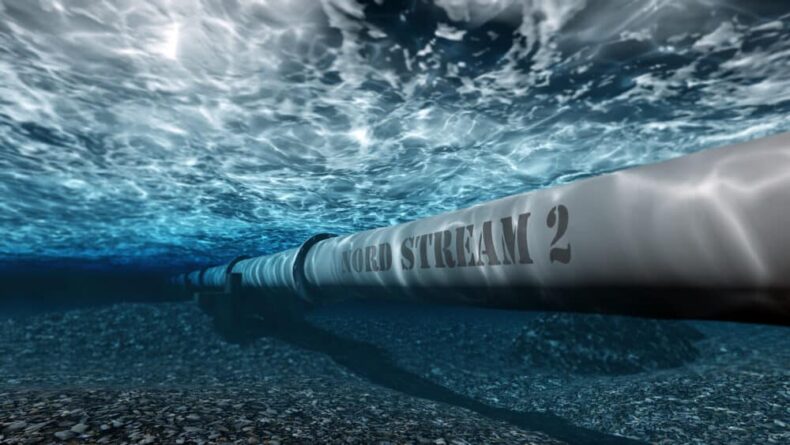On the evening of September 26, due to a leak in the Nord Stream 2 pipeline, reportedly the two branches of the Nord Stream gas pipelines emerged from the Russian giant Yamal arctic gas fields and extended along till Germany collapsed under pressure.
Danish authorities had reported the leaks. The authorities have warned the ships to maintain a five-kilometer radius distance from the pipeline area which runs through the Danish waters under the Baltic sea. They have described the area as “dangerous for ship traffic.”
Nord Stream 2 operator had to answer the questions regarding the leaks after the state-owned Russian gas giant Gazprom had forwarded the question to them.
According to the Nord Stream 2 operator’s statement, overnight the pressure in the gas pipelines dropped from 105 to 7 bars. The drop was noticed by a Nord Stream landfall dispatcher who had registered a massive pressure drop on Line A of the Nord Stream 2 gas pipeline.

Nord Stream 2 and where it started
Nord Stream 1 had been indefinitely closed down since September of this year, as Gazprom had shut down the pipeline blaming technical issues with the compressor units. This occurred on 5th September. And the Nord Stream 2 pipeline had never been in use before this. The Stream 2 pipeline had also been completed just last year. But, since the Ukraine war started in February, the already pending approval documents for starting the operations were withdrawn immediately in the first war days.
However, both Nord stream gas pipelines had always been “full of technical gas” and could have started operations within a day’s notice.
According to reports by Reuters, the leakers were first detected near the Swedish coasts where the island of Bornholm is located. It is also the area just at a distance of 100 Km from where the pipelines landfall in Germany.
Reportedly, the German government is working with their Danish counterparts and even taking help from the local authorities to determine the cause of the leaks. There is still no explanation or official statement from Gazprom.
According to Reuters citations, on their website Nord Stream AG had said they are still investigating the cause and ended their statement with no further clarifications.
TTF spot market gas prices in the Dutch are yet to react to the gas leaks. In the last weeks, European gas prices have been falling to miserable lows, this is due to the European governments trying to cope with the energy crisis by rolling out support packages and there have also been talks of capping prices of gas which might gather momentum. The European gas prices have been rising astronomically year on year, currently at 164% as on September 26, the trading price for gas is at €176/MWh.

A month ahead of schedule, at the start of this year, European storage tanks have eased the pressure on Gas prices after the full 80% target which was set by the European Commission was achieved.
As of September 26, the EU gas tanks are at 87.7% full, while the German tanks are 91.3% full. On the same day, another key market, Italy, had reports of tanks being filled at 89.6%.
On Twitter, Klaus Mueller, the German network regulator President tweeted that the current situation is tense, and yet again he also has no information about the cause of the leak.
In an interview, the German economic ministry says their team are currently in contact with the concerned authorities in-charge to give a clarification about the causes and the right facts as well.

Russia’s part in gas shortage in European countries
Over the last few months, since the war started, Russia has been shutting down other European countries’ gas supplies. Experts believe Russia is doing this to cause an economic war between the west and the east nations. The process had already begun when gas supplies of countries like Bulgaria, Finland, Netherlands, and Lithuania had been completely cut-off, and in countries like France, Germany, Slovakia, and Italy there have been partial cut-offs.
The gas pipeline leak happened just happened a day before the launch of the Baltic Pipe which would have carried gas from Norway to Poland. The Baltic pipe was also predicted to be replacing the 10bn cubic meters of gas Poland used to import from Russia, making the country to become the first EU country to wean off of Russia’s gas. Read when Germany decided to buy a 99% Stake in gas Giant Uniper













